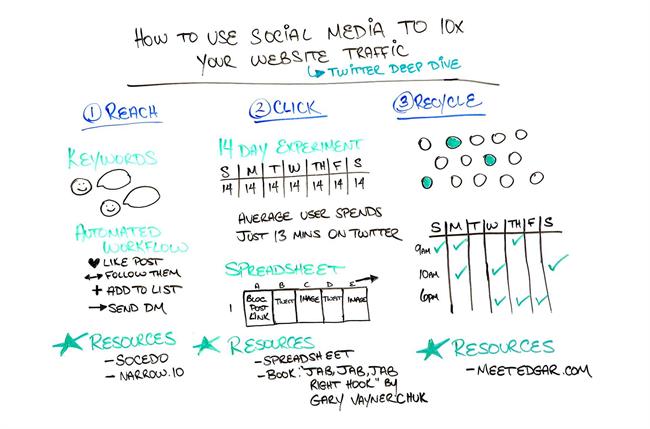How to Add Momentum to a Stagnant Blog

Your content management system (CMS) is ready to go, you're writing blog post after blog post, and you've published content consistently. The only problem? Traffic is looking dim and no one seems to be reading your information.
Gaining blog momentum is tough, especially with the increased competition and what some are calling content shock. If your blog is struggling to take off, here are a few ways to push it in the right direction.
Spend less time writing and more time promoting.
There is so much more to a successful blog than simply writing good content. Assuming you're producing relevant resources, be sure to think about how you'll get them in front of your audience. The good news is there are plenty of channels to experiment with.
Social Media
Channels such as Facebook, Twitter, and LinkedIn are great ways to promote your content. That being said, don't assume that posting it once on your company's Twitter account is enough. Far from it. In fact, Moz recommends experimenting with posting content 14 times a day to your followers to increase traffic.
You can also try paid social ads to get your content in front of more eyes. This is especially successful when you know which audience will find your content useful. Because social advertising allows you to target everything from age to interest, and because it's still relatively cheap, paid social is a popular approach to get more visitors to your site.
On top of posting more to your own social channels, try to engage influencers who already have a strong following. While it's unlikely they'll immediately share your content, there are ways to strategically interact with them to give your content a better chance of being mentioned or retweeted. Find influencers who have the audience you're targeting and put them on a list. Then make it your goal to engage with them and ultimately build a relationship. Getting a powerful influencer to vouch for you can drive tons of traffic to your blog.
Finally, make sure to share your editorial calendar with your coworkers. Many times, it's not so much that fellow employees won't promote your content, but rather they don't know what's being published or when it's going live. Additionally, it helps to provide some helpful tips - such as appropriate hashtags and what time of day to post - to the less savvy social media users.
Link Building
Although you might be hesitant, earning links from quality sites will help you rank higher in the search engine result pages (SERPs). This takes time, but one way to get consistent links is to provide primary research. Take Scott Brinker's martech landscape graphic. How many times have you seen this? Probably a lot. This piece of content alone will continue to earn links for the rest of the year, until Brinker posts his 2018 version.
Comment marketing is also a great way to drive traffic to your site when executed correctly. Especially if you provide consistent insight on larger blogs (you don't even need to drop a link every time!), other readers will start to recognize your name and blog. As with everything else, make sure that you're not spamming people - only comment when the resource or information you're providing is helpful.
Email Building
Whether or not you've built a solid email list, you can still utilize email marketing to add momentum to your blog. Let's say you're starting from scratch. Adding a way for blog visitors to sign up for updates via email is a great way to keep your audience engaged and coming back for more.
If your brand already has a large email list, see if you can use content to complement the emails that are already being sent.
As mentioned before, don't spam the list. If your contacts signed up to receive product discounts, sending them blog posts about the 2020 Olympics is not going to help your blog (or your brand) at all. But if you can add an informational blog post about the product they're interested in, it could be a good opportunity to inform your audience and drive traffic to the blog.
Refresh Your Content
No matter how hard you try to promote your content, if it's not striking a chord with the intended audience they're not going to waste their time on your site. So how do you quickly discover topics your audience cares about?
First, you can use tools like Buzzsumo that help discover the most shared types of content across specific platforms like Facebook and Twitter. You can also do some quick research to figure out what resources people are looking for. This could include keyword research and scouring question-and-answer sites like Quora for more information.
Although these strategies are good, it still doesn't answer what will solve your audience's specific pain points. In this case, try asking your sales team. Or better yet, your customer service team. The individuals at your company talking directly with your customers will have better insight into your audience's pain points. Mine their experiences with customers to create better content.
Don't Give Up
Companies that blog attract more traffic to their sites than those who do not. What's more, it's reported that 1 in 10 blog posts are compounding, meaning organic search increases their traffic over time and compounding blog posts make up 10 percent of all blog posts and generate 38 percent of overall traffic (source).
In other words, persist. Blogging is a marathon, not a sprint. It's unlikely you'll see overnight results, but putting in the effort to strategically promote relevant content will help reinvigorate your stagnant blog.


 (
(






